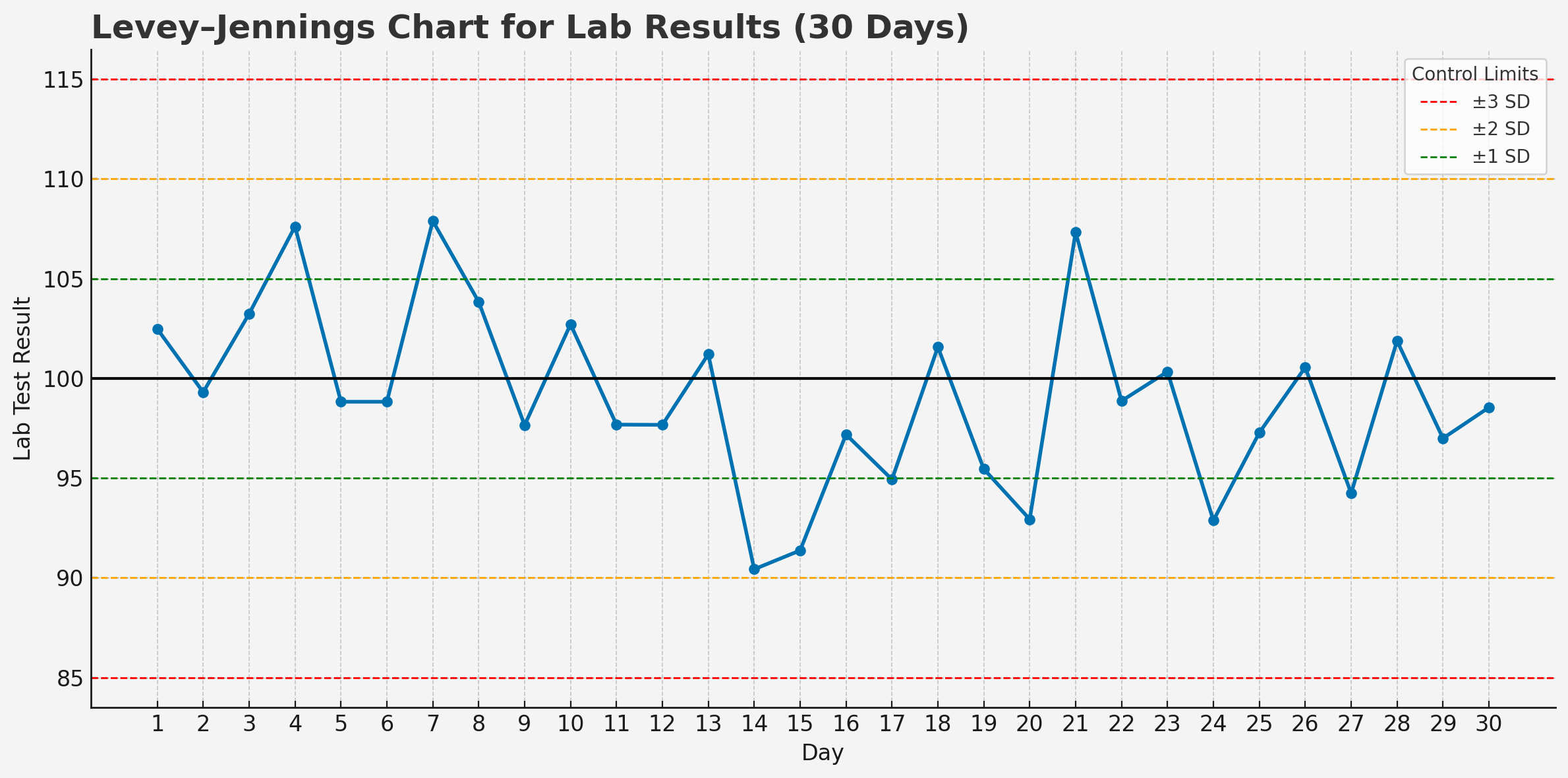The Levey–Jennings (LJ) chart is one of the most widely used tools for routine quality control. Introduced in 1950 by Stanley Levey and E. R. Jennings for clinical laboratories. This article explains what an LJ chart is, how it differs from other control charts, where it is most effective, and how to interpret it with confidence.
What Is a Levey–Jennings Chart?
A Levey–Jennings chart is a time-series plot that displays individual measurement values against a set of horizontal lines representing the process mean and multiples of the standard deviation (commonly ±1 σ, ±2 σ, and ±3 σ). By visualising how each point deviates from the established mean, the chart quickly highlights shifts, trends, and outliers that threaten process stability or analytical accuracy.
Setting Up the Chart
- Collect baseline data
Measure a stable QC material at least 20 – 30 times under routine conditions. - Calculate parameters
- Mean (μ)
- Standard deviation (σ)
- Define lines
- Centre line: μ
- Control bands: ±1 σ, ±2 σ, ±3 σ
- Plot daily results
Add each new QC point in chronological order.
Interpreting the Chart
While a single point outside ±3 σ is an obvious indication of trouble, more subtle patterns also require action. The most common decision rules—collectively known as Westgard rules—include:
| Rule | Condition | Recommended Action |
|---|---|---|
| 1 _3s | One point beyond ±3 σ | Reject the run; investigate immediately |
| 2 _2s | Two consecutive points beyond ±2 σ on the same side | Reject; systematic error likely |
| R _4s | Two points in a row more than 4 σ apart | Reject; random error suspected |
| 4 _1s | Four consecutive points beyond ±1 σ on the same side | Reject; process shift under way |
| 10 x | Ten consecutive points on one side of the mean | Reject; sustained bias present |
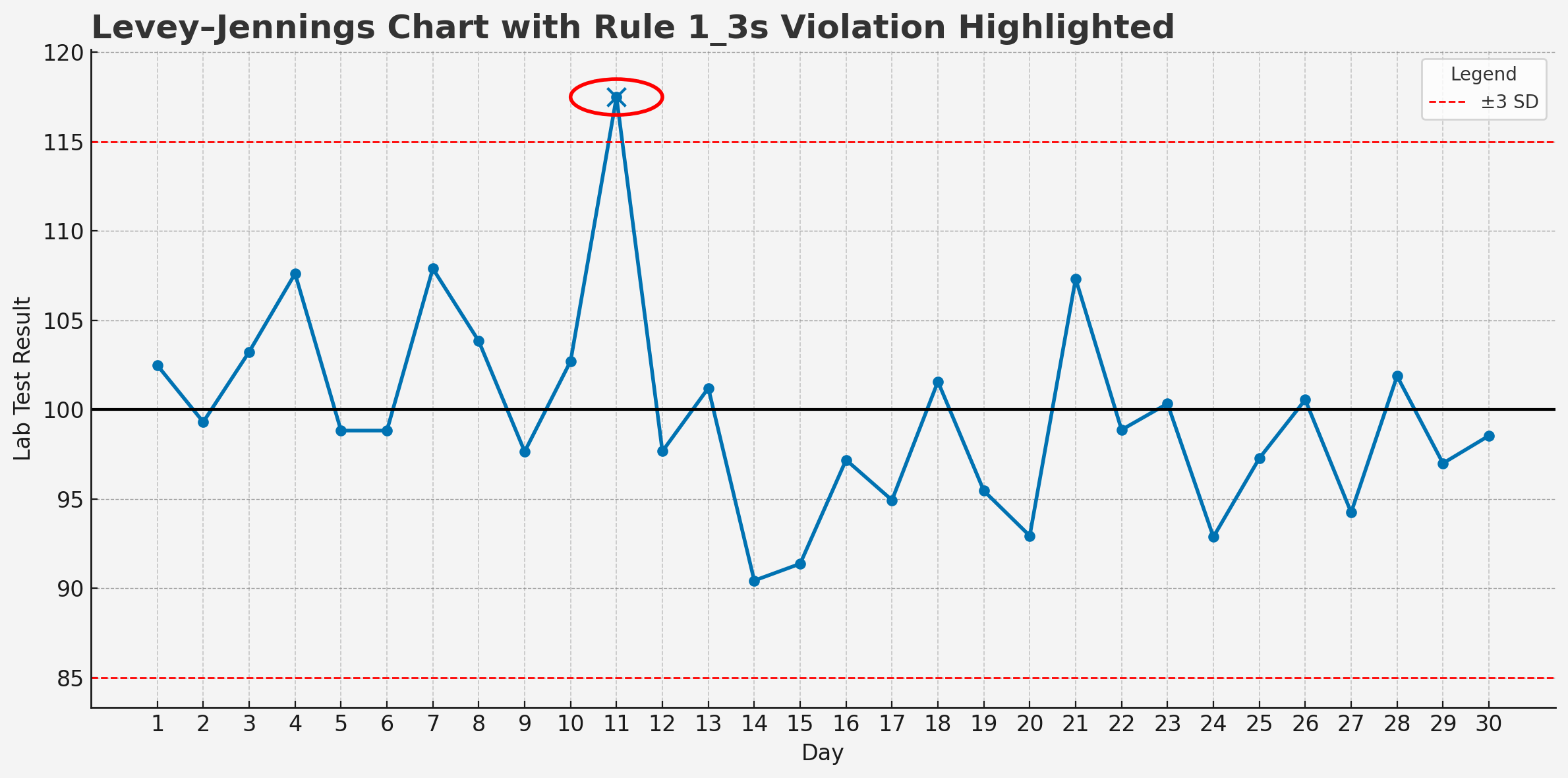
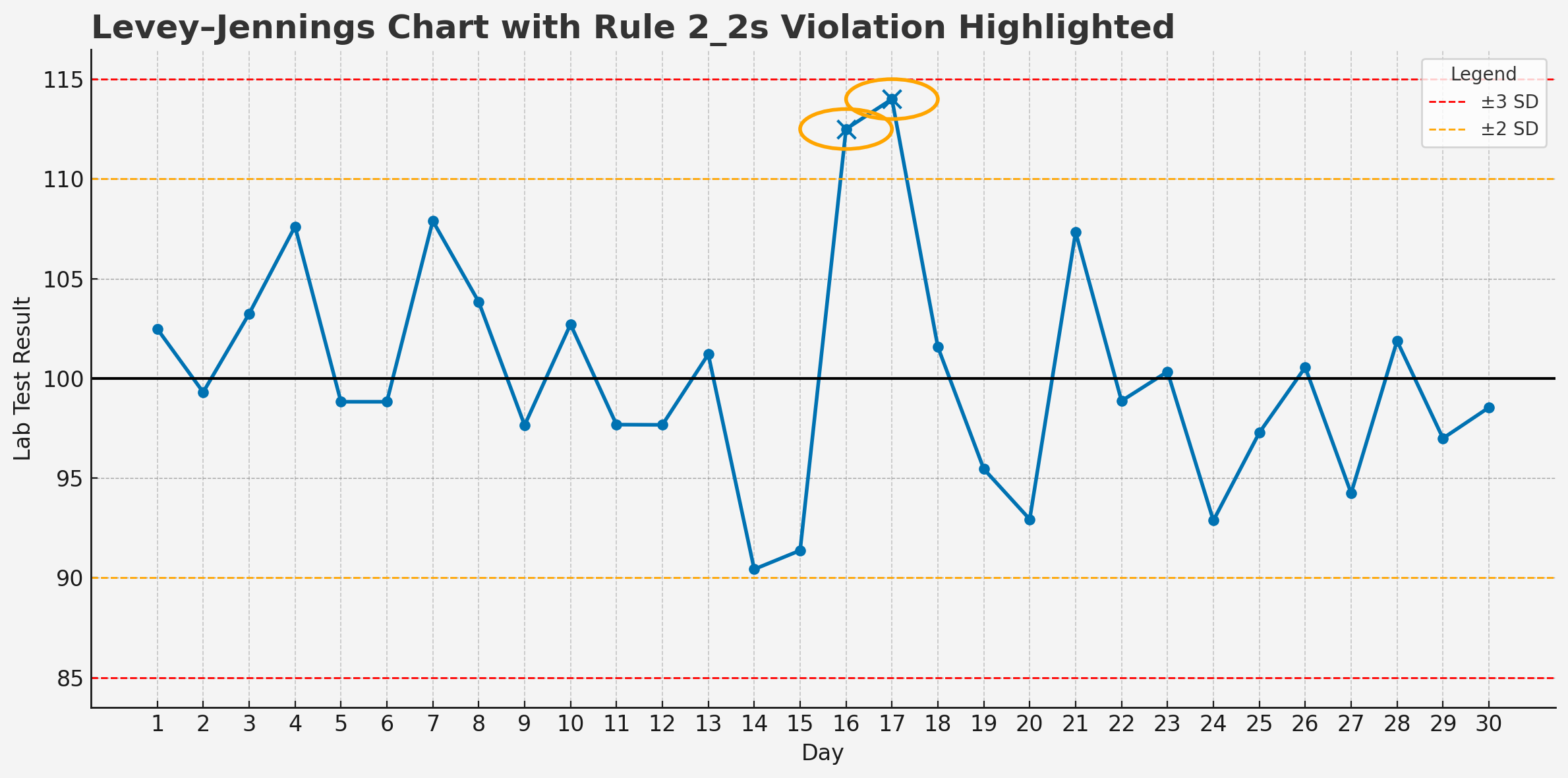
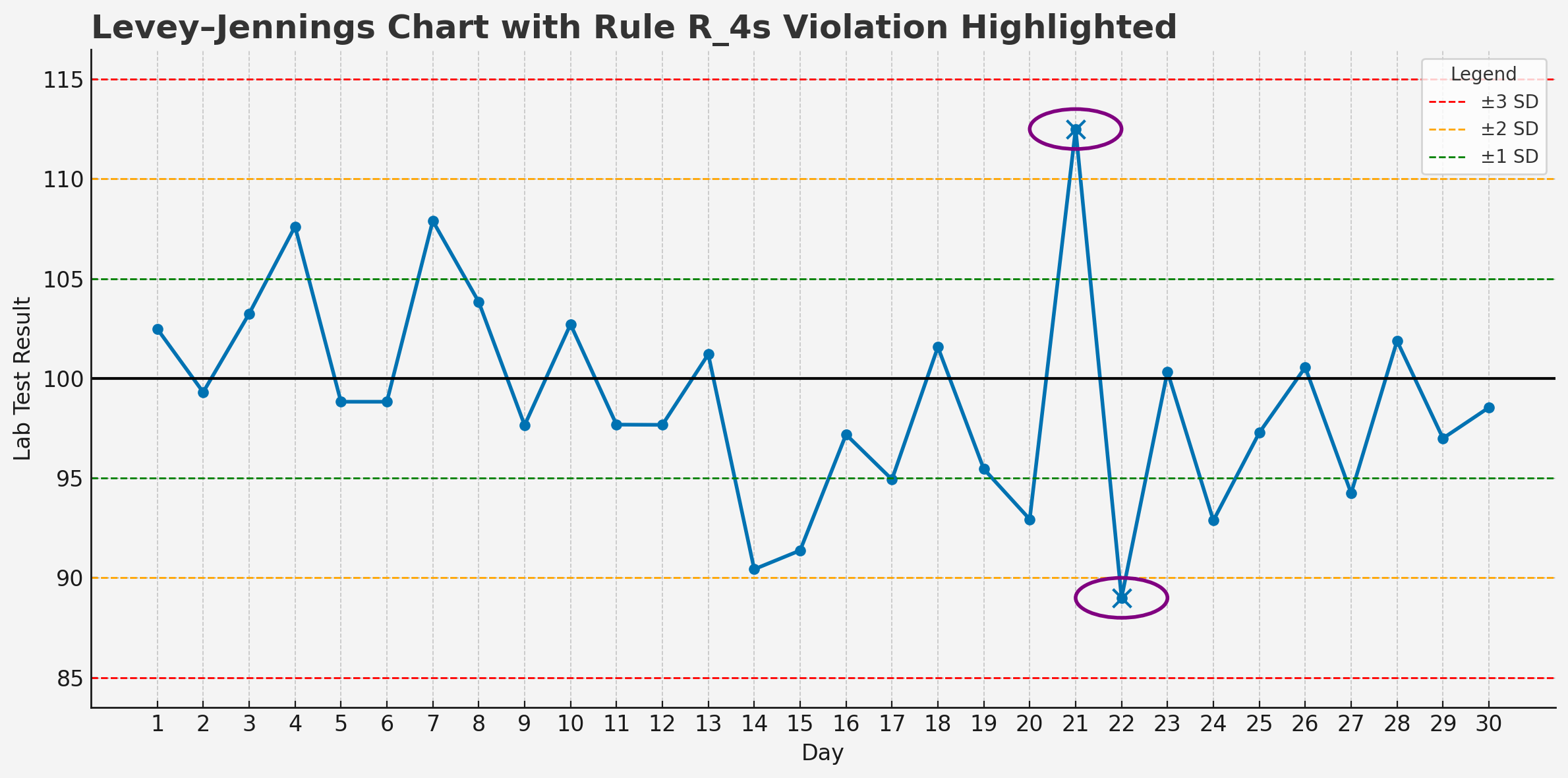
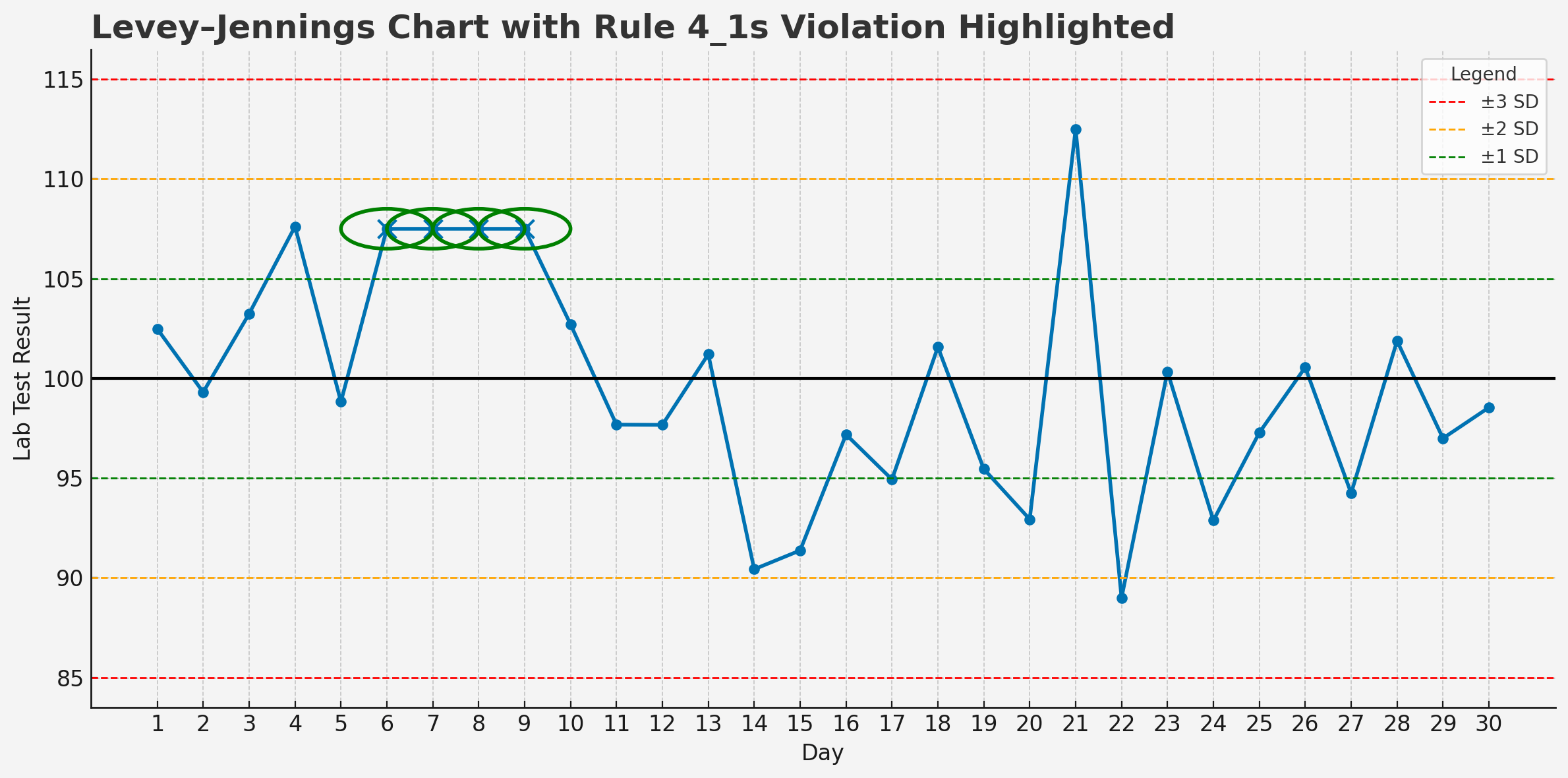
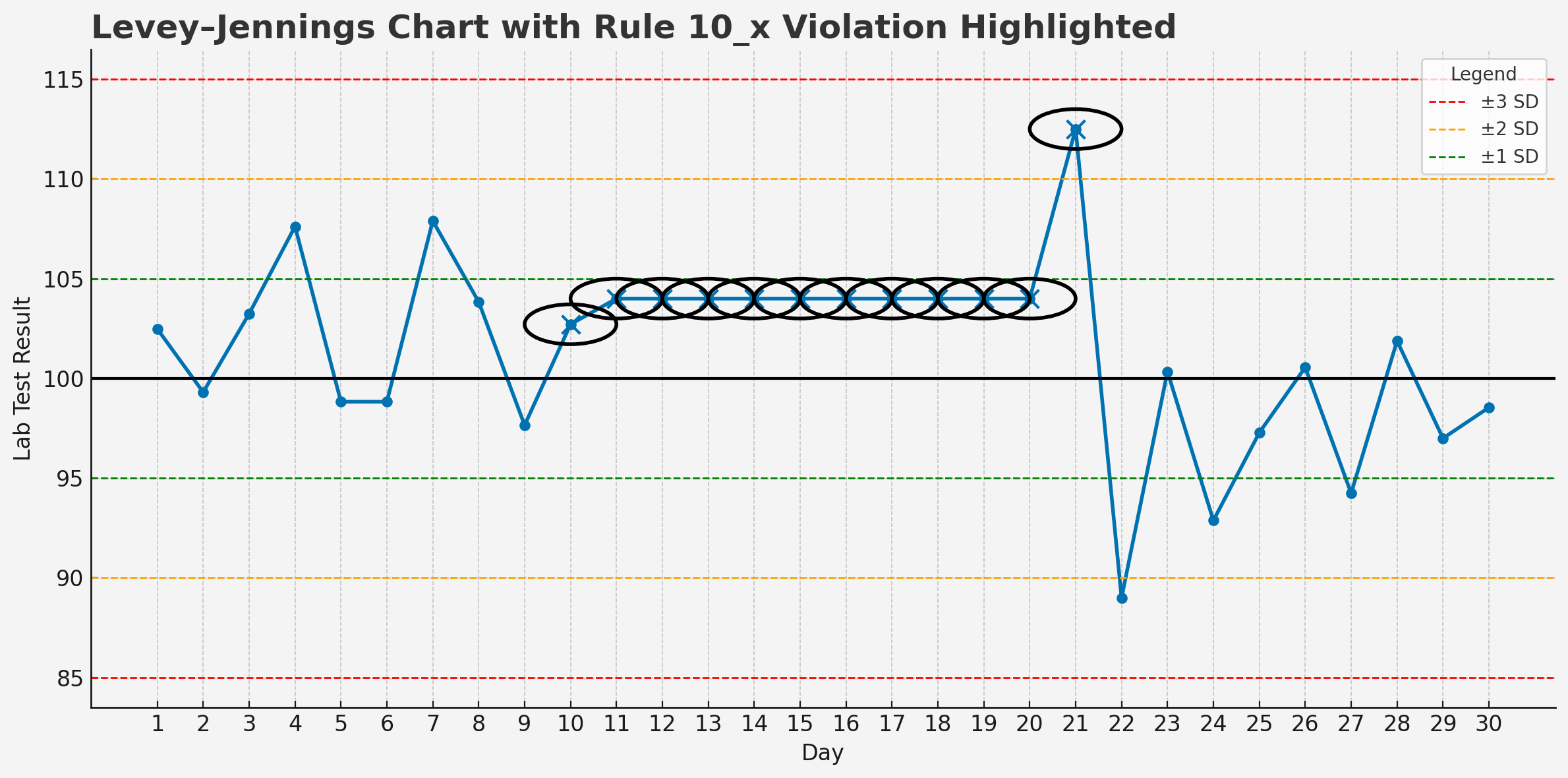
LJ vs I-MR (X-MR) Charts
| Feature | Levey–Jennings | Individuals–Moving Range (I-MR) |
|---|---|---|
| Y-axis scale | σ units | Actual measurement units |
| Control limits | μ ± k σ (k = 1, 2, 3) | μ ± 2.66 × MR̄ (I chart); 3.268 × MR̄ (MR chart) |
| Interpretation rules | Westgard rules | Western Electric or Nelson rules |
Advantages
- Straightforward to teach and interpret; no advanced statistics required.
- Effective for small sample sizes typical of daily laboratory controls or short production runs.
- Immediate visual feedback on both random error (precision) and systematic error (accuracy).
- Compatible with regulatory and accreditation standards (e.g., ISO 15189, CLIA).
Conclusion
The Levey–Jennings chart is an essential tool for daily quality control in clinical laboratories. It gives a quick and easy way to spot trends, shifts, or errors in test performance. By following Westgard rules and acting on any violations, labs can ensure reliable results and avoid reporting errors.

